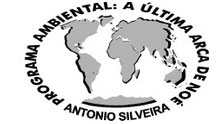Visiting the Red-spectacled (Amazona pretrei) and Vinaceous Amazons (Amazona vinacea) in the Lages-Painel-Urupema region, Santa Catarina,Brazil (june,2010)
por Fábio Olmos (f-olmos@uol.com.br)
Resumo: A região entre Lages, Painel e Urupema, em Santa Catarina, abriga um mosaico de florestas com araucária e campos naturais onde são encontradas espécies interessantes como Harpyhaliaetus coronatus, Donacospiza albifrons, Cyanocorax caeruleus, Lepthasthenura striolata, L. setaria, Thraupis bonariensis, Xolmis dominicanus, Pionopsitta pileata e Amazona vinacea. Um dos grandes atrativos da região é ser a área de alimentação de praticamento toda a população mundial de Amazona pretrei, grupos com centenas a milhares de aves podendo ser observados em áreas como o acesso a Urupema, às vezes associados a A. vinacea. Amazona pretrei se reúne em grandes dormitórios que congregam milhares de aves (um com 10 mil sendo visitado nesta viagem). Recomenda-se que observadores de aves interessados em ver este espetáculo contatem os pesquisadores do Projeto Charão (www.upf.tche.br/charao/index.php) The “Araucaria Plateau” of south-eastern Santa Catarina holds some of the last remnants of the once extensive Araucaria forests of Brazil interspaced with the grasslands of the “Campos de Lages” and “Campos de Cima da Serra”. One of the coldest regions in Brazil, the beautiful landscape is quite unlike any other in a mostly tropical country and holds some very special birds. We visited the region in 28-31 June,2010, driving the 800 or so km from Santos (much easier than facing the troubled traffic from São Paulo city) in some 11 hours. Actually, we made quite fast up to Curitiba, but the road from there to Lages was in repair and the many trucks had us to slow down. We lodged in one of the “rural lodges” in Lages-São Joaquim road and used it as a base to explore the environs. The area proved interesting, especially a fruiting persimmon that attracted loads of birds, including Pileated Parrot, Maroon-bellied Parakeets, Rufous-bellied, White-necked, Creamy-bellied an Eastern Slaty thrushes, Chestnut-backed-Tanagers, Azure and Curl-crested jays, Chestnut-backed, Sayaca and Black-and-yellow tanagers and White-throated Hummingbirds. Araucaria Tit-spinetail and Olive Spinetail were common in the tall araucaria trees around while Freckle-breasted Thornbird was heard in a neighboring patch of riverine bush. A foray in a neighboring side road produced a pair of Green Ibises, a male Crowned Eagle, a Grey-headed Kite, many Azure Jays, Scaled Parrots and a mixed flock with loads of Rufous-necked Sparrows, Long-tailed Reed-finches, Great Pampas-finches, Peppershrike and the endemic Striolated Tit-Spinetail. Coxilha Rica road (exit at km 284 of the BR 116 highway) was a good spot for grassland species such as Saffron Finches, Long-tailed Reed-finch, Great Pampas-finch and (briefly seen) Bearded Tachuri. Green Ibis was also easily found, but the merciless rain had us coming back sooner than intended. But the highlight of the trip was visiting the huge night roost of Spectacled Petrels with the team of Projeto Charão led by Nêmora Prestes and Jaime Martinez. Some 10,000 parrots whirled above us as the sun came down, screaming and making figures in the sky not unlike starlings use to do in Europe. The sight was just amazing and no picture can actually make justice to this most impressive wildlife spectacle. The parrots spend the months from January to June in the region taking advantage of the mast seeding of the araucarias, almost the whole world population gathering in a single night roost. The following day the Projeto Charão team took us to see more Spectacled Parrots feeding on araucaria seeds along the Painel-Urupema road, some even right by the latter town’s entrance. This day was fruitfully ended by watching 250 Vinaceous Amazons as they came to their night roost by a swampy area where a flock of six Black-tailed Monjitas was quite collaborative to pictures. We planned to leave on the 31st but as the weather improved as we drove back home we came back on our racks through Urubici straight to Urupema where good fortune led us to mixed roost of Red-spectacled (some 1,000) and Vinaceous (some 300) which put quite a show under perfect light for pictures. A bonus was a Black-and-rufous Warbling-finch. The region is already well-known by tourists but bird-watchers visiting it seem to be few. Anyone willing to see one of the most amazing wildlife spectacles in South America should not miss the Red-spectacled Parrot roosts, with he bonus of so many interesting species, including Brazilian endemics and rarities, being found there.




